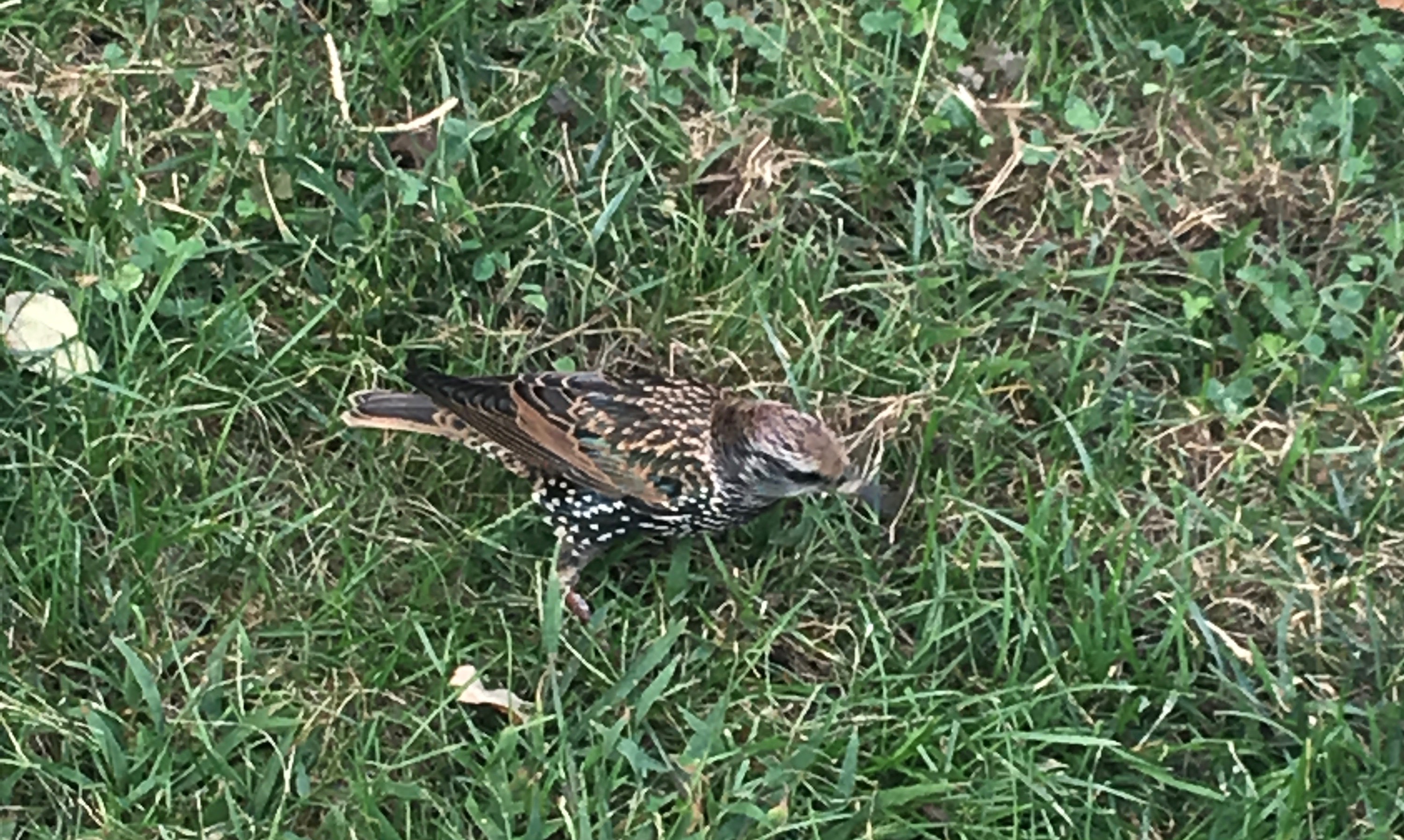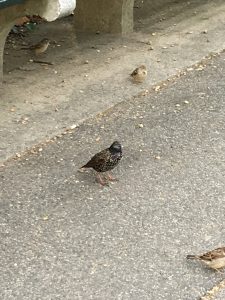European Starling
For my sustainable fieldwork action I chose to observe and study the European Starling (Latin name Sturnus Vulgarus), which one can find in all 5 boroughs of New York City, though the Central Park is the most popular open space they prefer to hang out. Their origin was once Europe, before a man in 1890s named Eugene Schieffelin imported 100 flocks of Starlings to NYC which have exploded and became 200 million alive in the US today. The specie, who is a vertebrate in the food chain, have had a negative impact on the native hole-nesting birds, where they would interfere with their nesting periods and their search for nesting sites, their search for food and dating their mates for new offspring. The male Starlings especially would interrupt the cheering and sputtering songs of hole-nesting birds by imitating the songs of other birds. The birds who are most affected are the Wooodpeckers, the Blue birds and the red headed. Explaining why, the European Starling are considered as invasive species in North America. The Government tried to eradicate them but they are extremely hardy and still they keep continue to grow. Adding to this point, the Starling is very adaptable, meaning that they can breed in suburbs, cities and farms. They can built their nests around buildings and settlements, using arches or garbage bits they would find on the street 9especially in New York). More specifically, I saw Starlings nests new my home in Brooklyn which was built out of litter, plastic cabs and bags.
European Starlings Profile:
Feeding Behavior: The Starlings feed mostly in open areas on the ground, usually surrounded by pigeons and sparrows. They prefer eating berries and insects they catch in the air, though they would eat also bread crumbles, corn, and seeds they would find on the ground.
Diet: Their ideal diet, though this is hard to find ion NYC due to the urban environment they live in, they would feed on seeds, berries, and insects (such as spiders, grasshoppers, snails, caterpillars).
Breeding/Offspring: The flocks break off for breeding season to fin their mate individually. The incubation can take place in both parents (male and female Starlings, though the female Starling does more). The incubation time period usually takes up to 12 days. The Starlings will have 2 broods per year, which will be in the spring and summer. Their eggs are white- greenish colored, where their offspring would leave the nest after 21 days.
Nesting: The male usually establishes the territory and chooses the site of the nest. The Mal then attract the mate by singing, where he sometimes is found to have more than one mate to have a brood with. His strategy to find a mate is often to start to sing and wave his wings when a female arrives.
The European Starlings look: The Starlings have to coats spending on the season they are in. In the summer and spring their coat (color of their feathers) is black with white sprinkles. When the days start to get colder in autumn and in the winter the coat changes from black into a light brown with white sprinkles too.
In the following seasoned photoshoots of the Starlings I took, I observed his coat to change from black in September into a light brown by November.
September
Location: Bedford Ave in Williamsburg, Brooklyn NY and Central Park in Manhattan.
The Starling in search for foo on the ground, hanging out with sparrows and pigeons.
Observations: You expect to find Starlings usually in swarms of sparrows and pigeons and not necessarily with other Starlings. They usually group together in search for food on the boardwalks of NYC.
October
Location: Biowale in Brooklyn NYC
Observations: The coat of the Starling changes from a dark black into a light brown. They also seemed to have lost weight since the summer, since less food is available for them in the late fall season (such as berries and seeds they get more of in the summer).
November
Location: Central Park, Manhattan NYC
Observations: The coat has now fully changed from a dark black into a light brown. In addition, the Starling also started to group together again in their flocks compared to the last two months. Also since the days get colder and the search for food is sparse, I observed the Starlings within their flocks compete for food. In other words, the strongest ones feed over the weak ones. Their behavior also seemed to be more aggressive and evil-eyed.
Conclusion
After observing and studying the European Starlings behavior and characteristic based own personal observations and former research I can say that this type of bird is a very hardy, smart and evil-eyed type of bird, who have the ability to adapt to every climate condition they are stuck in. Suggesting that nature has found ways and strategy to adapt and use clever and creative ways to build and use their environment for their personal needs such as building their nests out of garbage bits since open spaces with green open space is sparse to find in Brooklyn and Manhattan. Its also interesting that birds change their coats (their color of their fear) depending on the seasons they are exposed too, expelling why we humans are drawn to wear different styles and colors depending on the season and the mood of the season. Furthermore, I learned how Starlings also fake or manipulate their environment they live in for their personal advantage as we humans due, such as manipulating songs of other birds to attract a mate. We also share the characteristic of egoism where we first would watch out for personal health and needs before helping others. The Starling birds especially are very aggressive when it come to hunt for food, watch out for mates or find a location for their nest, which explains why only the strongest once survive and succeed in mating and survive in various climate conditions. All in all I can state that we could use and learn from the Starlings adaptation characteristic to help us prepare and change the landscape of NYC for using sea level due to climate change in the up coming year. Also the fact that the Starlings build their nests out of garbage proves to us that we have a lack of open space in Manhattan and in the surrounding boroughs. Those are important issues to raise and change so that the our species stay and stay healthy in our environment. In addition , bio whales and green open space help us to clean our air and absorb water we get from heavy rain, which would other wise cause severe flooding in NYC and overwhelm the sewage disposal system in the Newtown Creek. Therefore, its necessary to observe and learn from the species and the environment in order to make changes that benefit the sustain of our ecosystem.























